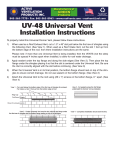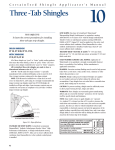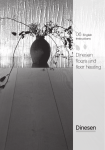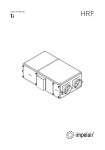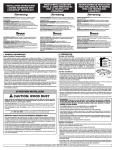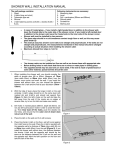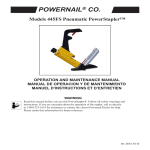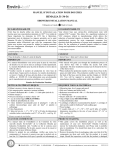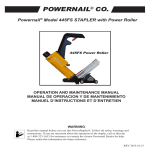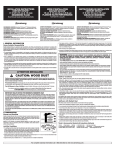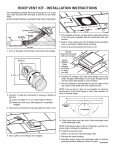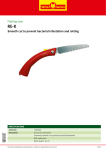Transcript
5 in. x 16 in. Natural Kiln-Dried Eastern White Cedar Shingle Siding General Installation Instructions • Always work from the bottom to the top. • To calculate the number of courses to be installed: Measure the surface area to be covered and divide it by the desired exposure. Adjust the exposure to produce even courses. Leave at least 4” (10.2 cm) for the last course at the top. • Draw a line or use a board to align shingles horizontally. • For the first row (wall, roof), always lay a double course of shingles and offset them by at least 1 1/2” (3.8 cm) so that joints do not line up. The bottom course should extend at least 1” (2.5 cm) from the top of the foundation or eaves. • Use 2 fasteners per shingle at about 3/4” (1.9 cm) from each edge, and at 1” (2.5 cm) above the butt-line of the overlapping shingle. If shingles are wider than 8” (20.3 cm), use 2 additional fasteners driven 1” (2.5 cm) apart near the center of the shingles. • Leave a gap of approximately 1/8” to 1/4” (0.3 to 0.6 cm) between neighboring shingles to allow for expansion due to moisture. • Joints of successive courses must always be offset by at least 1 1/2” (3.8 cm) to prevent water build-up. Treat shingle imperfections the same way. • Never allow joints from any 3 consecutive courses to line up Exposure: • To prevent buckling, use a 5” (12.7 cm) maximum exposure. Fasteners: • Rust-resistant (galvanized, aluminum or stainless) nails or staples, 1 1/4” to 1 1/2” (3.2 to 3.8 cm) long. Fasteners must penetrate at least 1/2” (1.3 cm) into the underlayment. For staples, use 7/16” (1.1 cm) minimum crown. Ventilation • It is important to ensure adequate circulation of air underneath shingles in order to enhance their durability, reduce moisture, and save energy: • Install horizontal wooden laths (1” x 3” or 1” x 4” (2.5 x 7.5 cm or 2.5 x 10.2 cm)), setting them apart by a distance equal to the exposure (centre to centre). Nail shingles directly to them. You may wish to consider using Home SlickerTM (on walls) or Cedar BreatherTM (on roofs). Angles, Corners, Openings, Edges • Flashing, which comes in various materials, sizes and shapes, is required for all of the above features. It is important to ensure that local building codes are respected. Depending on the risks of seepage, flashing generally extends approximately 4” to 8” (10.2 to 20.3 cm) on either side. In addition to concealing structural cutting imperfections that may occur, appropriate, properly installed flashing is instrumental in preventing rotting, water and insect infiltration. When installing flashing, care must be taken to not drive nails near the center, especially in the case of roofs. • It is also recommended that joints in infiltration-prone areas be caulked with silicone. Wall Corners – two possible methods • Use shingles, by alternating the courses on both walls (weave corners), or • Use boards that completely cover up the corner Existing Construction – two possible methods • Remove existing siding or roofing material and proceed in the same way you would with a new construction, or • Install shingles directly on top of the original covering and ensure that nails can be solidly driven into the surface below Hips and Ridges – two possible methods • Choose same-width shingles, specifically, 4” to 5” (10.2 to 12.7 cm). Alternately overlap all shingles on both sides. • The first row must be a double course. Using two nails (approx. 2” (5.1 cm) long), install hip and ridge caps; or • Use prefabricated hip and ridge units. Their mitered joints and concealed nails can save considerably on installation
